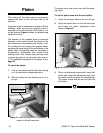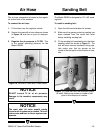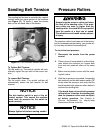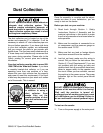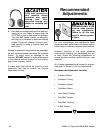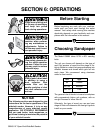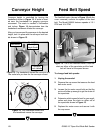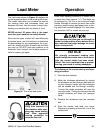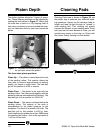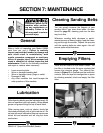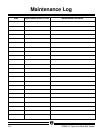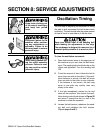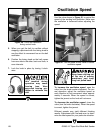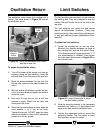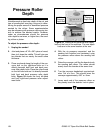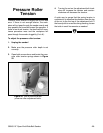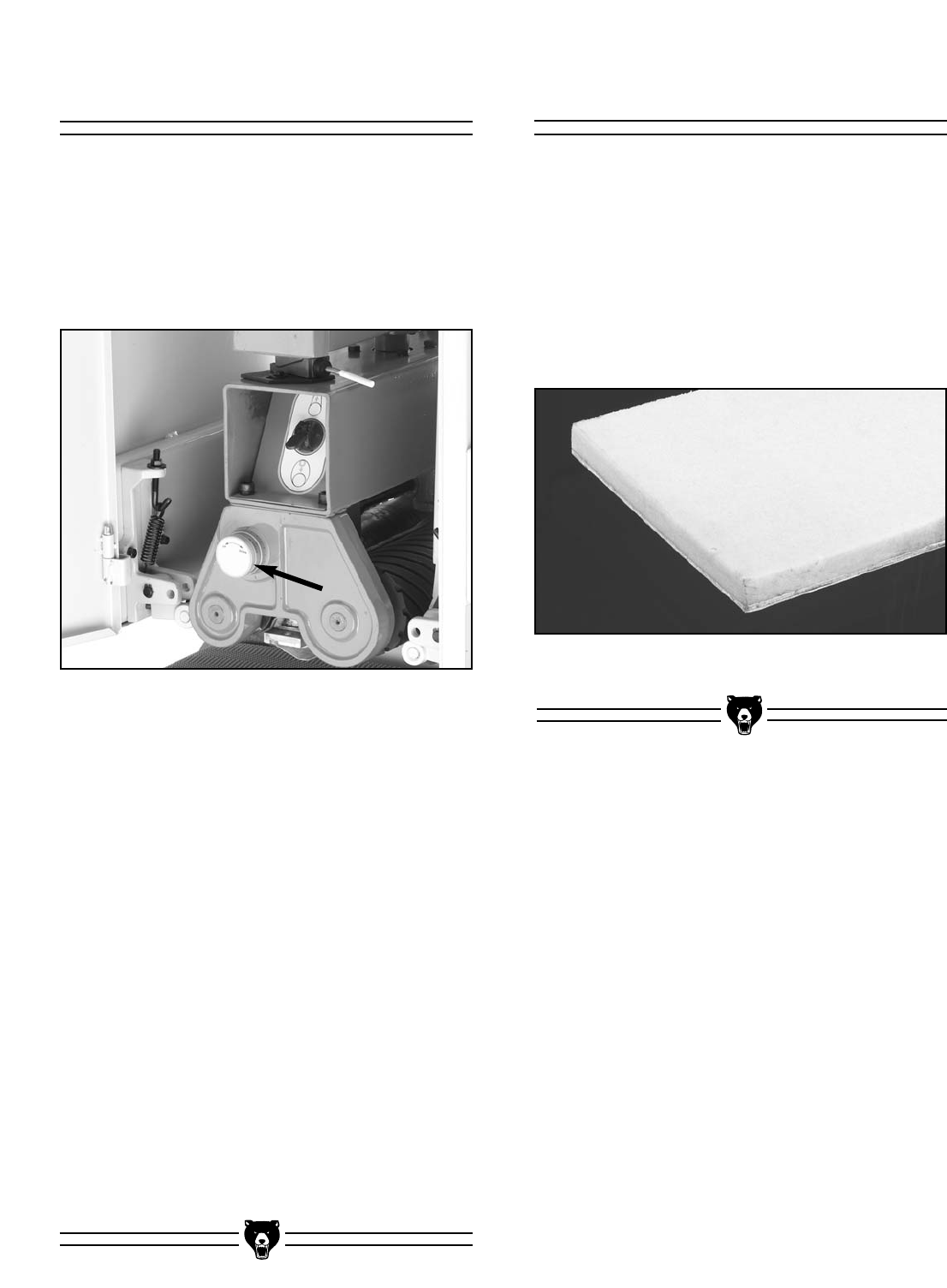
-22- G9983 15" Open-End Wide-Belt Sander
Cleaning Pads
Figure 18. Sanding belt cleaning pad.
Cleaning Pads (one is shown in Figure 18) are
the perfect way to enhance your wide-belt sand-
ing operations. Simply set the conveyor table to
height and feed the pad through to “unload” a
used sanding belt. This cleaning will greatly
increase the lifespan of your sanding belts. Since
each pad can be used dozens of times, you will
actually save money in the long run. Check with
the current Grizzly catalog for more details.
Platen Depth
The platen position allows for 3 types of opera-
tion. These different positions can be adjusted by
rotating the knob shown in Figure 17. Notice that
the knob has a scale on it. By keeping track of
how many revolutions you have rotated the knob,
you can determine how far you have moved the
platen.
Figure 17. The scale on this knob tells you how
far you have moved the platen.
The three basic platen positions:
Platen Up — The platen is raised above the level
of the sanding rollers. This position allows the
front roller to remove large amounts of material
quickly, but leaves a rough finish. The best belt
grit for this position is #100 or coarser.
Platen Even — The platen is set even with the
sanding rollers. The rollers work together with the
platen to produce intermediate/final finishing. The
best belt grit for this position is #100-#180.
Platen Down — The platen is lowered below the
sanding rollers. The majority of the work is
accomplished by the platen pressure on the
workpiece. The result is a smooth, flat finish. The
best belt grit for this position is #180 or finer.
Avoid Lowering the platen more than .2MM below
the sanding belt rollers—this is the equivalent to
1 full turn of the knob.



